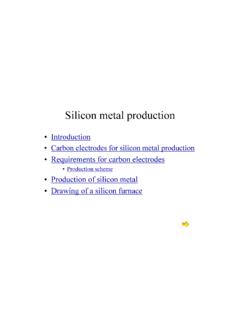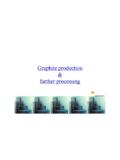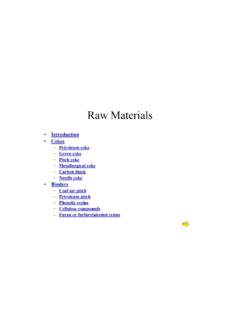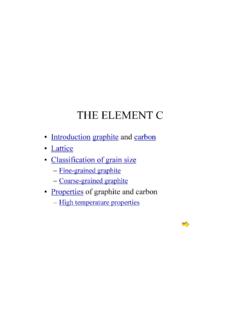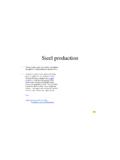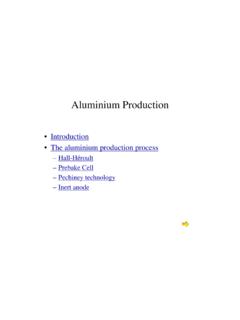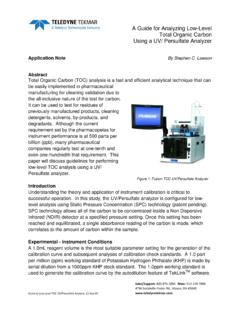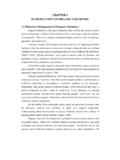Transcription of Chemical Resistance of Carbon and Graphite
1 Chemical Resistance of Carbon & GraphiteChemical properties: Carbon is insoluble and has no liquid state. It can be rated among the materials of highest Resistance to Chemical attack. organic chemistryInorganic chemistry Chemical Resistance of Carbon Materials, Hard Carbonand GraphiteOrganic chemistryCarbon is resistant to nearly all organic media. In this class are included the intermediate and final products of the following industries: petrochemistry coal purification synthetics paint dyes medical supplies cosmetics foodstuffs photographic chemicals refrigerants anti-freezing chemistryCarbon is also resistant to most inorganic media, most acids and bases, all aqueous salt solutions and most industrial recommendations and Chemical resistanceIn practical application Carbon often is impregnated.
2 The impregnation agent, too, has its influence on Chemical the table Carbon Materials Carbon materials are recommended with and without impregnation. The data concerning Chemical Resistance ofresin-impregnated Carbon material can be interpreted as applicable, too, for a resin-bonded Carbon grade. But contrary to a resin-impregnated material a resin-bonded one may rather be unsuitable for the function in view, asany Chemical influence on the binder may result in a lower strength of the Carbon . The table shows a large number of organic and inorganic media as examples for the wide range of the Chemical Resistance of our Carbon materials. The structure formulas used are those of the "Handbook for chemists and physicists" by D'Ans-Lax.
3 For a number of media no Chemical formulas are mentioned:1 . Media, chemically to be described as a mixture fruit juices, beer,milk, oil, petroleum etc. These mixtures are marked a).2. Compounds of cyclic or complex structures, marked b).Materials recommendations and Chemical resistanceThere are some strongly oxidising inorganic media (acids, bases, halogenes) to which Carbon is not resistant, or only resistant up to certain temperatures and concentrations. Carbon is not resistant to liquid alkalis ( sodium or potassium) which form intercalation compounds with the Carbon . During this process the volume of the part increases and thus destroys it asa mechanical component.
4 The table Hard Carbonand Graphite shows media with limit-temperatures and limit-concentrations to which Carbon is not or only resistant up to the staticaltest conditions with the values mentioned. These indications are valid only for one defined Chemical combination. Because of the multitude of possibilities, mixtures of media have not been taken into consideration, although some general rules are mentioned. Resistance to mixtures of acids depends on the temperature and the Resistance of the Carbon to the concentration of the individual parts. The exceptions to this rule are fixed acid mixtures like mixed acid (sulphuric acid: nitric acid = 3:2) and aqua regia(hydrochloric acid = nitric acid 3:1).
5 Resistance to acidified aqueous salt solutions depends on the temperature and concentration of the free acid: the sulphuricacid content in a copper sulphatesolution or the nitric acid content in a cobaltous nitrate solution.
